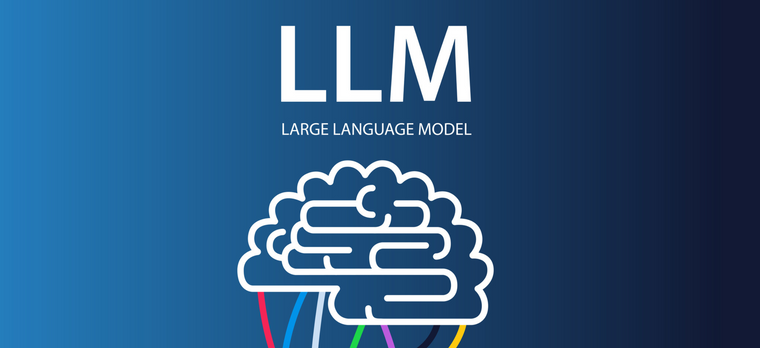Avoiding the Coldplay Effect: Why Cultural Intelligence Matters in the Age of AI
AI will always trend towards the middle. Cultural intelligence is your unfair advantage. Insight should provoke, not pacify. It should rebel, not regress. That’s how you avoid the Coldplay Effect.

AI will always trend towards the middle. Cultural intelligence is your unfair advantage. Insight should provoke, not pacify. It should rebel, not regress. That’s how you avoid the Coldplay Effect.
It’s Christmas 2014. I’ve just started in Culture & Trends at a research agency. Instagram is only a baby and TikTok hasn’t yet been born. I’m eagerly anticipating the launch of JWT’s Future 100 and TrendWatching’s annual report (which we pay handsomely for). The moment the reports land in my inbox I pour over them, marveling at this exciting world of trends. I’m in awe of the on-the-ground trend spotters, the ingenuity of the names used to coin the trends, and the gorgeous layouts.
Flash forward to Christmas 2024. LinkedIn tells me someone’s shared a Google Drive of 250+ trend reports - free to all, with an AI-generated summary. These reports are an opportunity for brands and agencies to showcase their perspectives on culture and trends. I’ve contributed to a few myself over the years.
Today, cultural insights are everywhere. Good news - or is it?
Where Average Becomes the Enemy
The problems is, we are all accessing the same stuff – and now AI is accessing the same stuff. When everyone is using the same tools, referencing the same sources, and chasing the same metrics, we all end up in the same place. The result? The Coldplay Effect - technically polished, broadly appealing, but ultimately bland and forgettable.
It’s a phenomenon that’s increasingly visible across sectors, as Alex Murrell highlights in The Age of Average. In design, this looks like the ubiquity of "blanding" - logos, packaging, and brand identities stripped of character. In the automotive world, car design has converged on a narrow set of features - same silhouettes, same headlights, same colours - because every model is tested and optimized in the same way to please the widest audience. In media and advertising, campaigns are increasingly shaped by what will perform best in A/B tests and algorithms. He terms this ‘moodboard culture’ - creativity is reduced to remixing the same references, converging on a smooth, marketable average.
 The wind tunnel effect (Source: Adrian Hanft, User Zero), featured in The Age of Average
The wind tunnel effect (Source: Adrian Hanft, User Zero), featured in The Age of Average
Narrow Data Inputs Create Misleading Generalities
In trend reports, dominant cultures - particularly youth culture from the Global North - are overrepresented, while regional nuance, subcultural depth, and alternative perspectives are filtered out. Even sources that appear authoritative, like industry reports or research whitepapers, are often driven by commercial agendas - produced by companies selling products or pushing narratives, not revealing neutral truths. Online everyone is performing.
The internet promises endless information, but it often acts more like a distortion lens than a window to the world. Rather than offering a broad or balanced view, it amplifies the loudest voices, the most clickable opinions, and the smoothest narratives - flattening complexity into marketable generalities, never letting facts get in the way of a good story.
This dynamic becomes even more problematic when AI systems, trained on this same skewed data, start generating content that reinforces these distortions at scale. When AI learns from this curated feed, what emerges isn’t a picture of the world as it is, but a hyper-edited moodboard of what performs well online.
AI Needs Cultural Intelligence to Stay Sharp
AI excels at pattern recognition - but that strength is also its limitation. When trained on mainstream internet data, it gravitates toward the familiar, reinforcing dominant narratives and sanding off the edges of originality. It erases the weird, the rare, the regionally specific - what statisticians call “the tails of the distribution.” But those tails are where the magic lives: in the awkward, the emergent, the subversive.
As Shane Longpre - PhD researcher at MIT and lead of the Data Provenance Initiative - puts it, the future of AI depends on human experts to generate, curate and validate trustworthy, nuanced data. Without humans in the loop, AI collapses into itself. It becomes safe. Predictable. Infinitely bland. Unable to surprise or reflect cultural nuance.
The same is true in research. Without cultural context, insights risk staying surface-level - technically accurate, but lacking depth, nuance, or real-world relevance. Culture and trends work should help us understand people more deeply, but if it draws on the same recycled sources, it ends up just as bland. And bland insights don’t change anything.
How We Can Break the Coldplay Cycle
We can’t rely on AI pointed at the internet. When building AI simulations, we must use trusted, client-owned data combined with our curated cultural intelligence. And we must keep humans firmly in the loop. Here’s how we break free from middle-of-the-road AI outputs with Cultural Intelligence:
1. Curated Beats Mass Produced
AI thrives on quantity. We need to prioritize quality. Instead of mass inputs, handpick from cultural artefacts, expert voices, and niche signals. Power proprietary simulations with relevance - not random noise.
2. Sharpness Over Smoothness
AI loves to play it safe, to stay within the lines. But true insight is sharp, focused, and often awkward. We review sources against our cultural values frameworks and critical lenses to reveal what’s true, not what’s nice.
3. Margins Predict the Mainstream
The future doesn’t start in the middle. It starts on the fringes. Bring in voices from subcultures, creatives, and experts who are shaping the future - far beyond what you’ll find in a trending hashtag. That’s where true opportunity lies.
4. Humans, Always in the Loop
AI is great, but it’s not infallible. We don’t leave the machine to raise itself. Strategists, analysts, and domain experts play a crucial role in interrogating outputs, adding context, and shaping meaning. Because AI needs accountability, not autopilot.
Bland Research is the Real Threat
AI is transforming the insights industry. But the risk isn’t just bad research - it’s bland research. When you feed AI the same sources everyone else is using, it gives you the same answers everyone else is getting. Polished. But predictable. Generic. Forgettable. Unoriginal.
In a world where every campaign, car, brand, and building blurs into sameness – can you risk your insights fading into grey?
Kelly McKnight
Executive Director at VERVEKelly is an award-winning insight leader specializing in the integration of Artificial, Cultural, and Human Intelligence to deliver deeper, more actionable insights. At Verve, she has played a key role in pioneering AI-powered Intelligent Personas (VIPs), combining high-quality proprietary data with generative AI to redefine audience understanding. With an extensive background in market research, she has worked with leading global brands to develop and deploy innovative approaches that blend technology with human expertise. Kelly has bold views on the future of research and isn’t afraid to challenge the status quo - championing smarter, faster, and more ethical ways to unlock insight.


